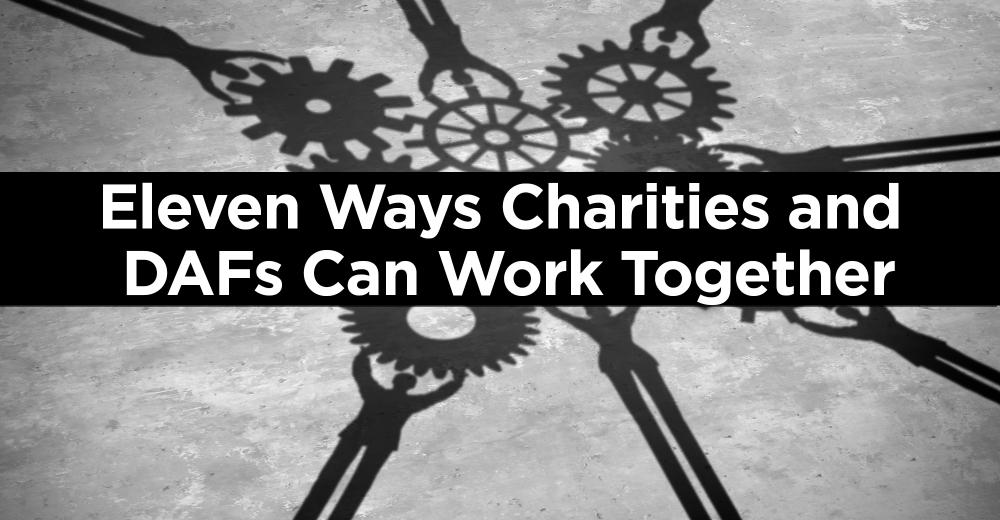1 12
1 12
Nonprofits should clearly indicate on their websites that they accept contributions from DAFs (as well as from private foundations, bequests, appreciated stock, etc.) Most charities still just indicate on their Donation pages that they accept credit card contributions and checks so that is mostly what they receive.
Numerous studies have shown that donors who have DAF accounts are more generous when recommending grants from those accounts than if they were to write checks, donate by credit card or even when donating appreciated stock.
List the information on the website that donors can provide to their DAF sponsors so they can quickly vet the organization and forward a check. Provide the tax ID number, address, and contact information for a development staff member should the DAF sponsor need to contact someone with any questions or if they need information to more quickly ACH funds instead of sending checks.
When meeting with donors, development professionals may want to ask how they prefer to donate, and if appropriate, determine if they have a DAF or other charitable vehicles.
Let donors know that the IRS has indicated that DAF sponsors can now fulfill pledges from DAF accounts as long as the DAF sponsor doesn’t refer to a pledge in the grant letter to the charity. (DAFs still cannot pay for tables or auction items.)
Charities should thank and engage DAF donors every time a grant from their DAF is received. If a donor has taken the time to establish a DAF, they are likely interested in and serious about philanthropy. Charities should invite the donor for a site visit, volunteer or fundraising events. Though it’s difficult to know the size of a donor’s DAF account, it’s worth following up even if the initial grant is small.
Only about 5 percent of grants from DAFs are anonymous, but charities should nonetheless send thank you notes to any anonymous donors c/o the DAF sponsor and request that it’s forwarded. Though AEF is glad to do this, unfortunately, many DAF sponsors do not. Regardless, it’s worth the small effort and can lead to continued donations and additional opportunities.
Many charities appreciate that some donors may not feel comfortable in donating a large asset or amount at one time to them. By donating these to a DAF sponsor, they still intend to make grants, but they’re able to do this over time instead of fearing that they have to give it all at one time. Because the DAF sponsor does all of the work of accepting more complex assets, charities can save more time and effort. and can simply receive the grant checks from the DAF.
As many nonprofits request direct bequests from the estates of donors, they can also ask their donors with DAF accounts to direct a final grant upon their death from their DAF account.
Because many DAF accounts will continue after the donor’s death and their heirs will be the successor donors, charities should seek to engage this next generation of DAF donors.
When sending a thank you letter to a DAF donor, remove any tax references since they received the deduction at the time they donated to the DAF and not when the grant was made. Some donors just turn over all thank you letters to their CPAs for their direct donations as well as grants from DAF accounts, so it’s important that CPAs don’t unintentionally claim a deduction for grants from DAFs.

